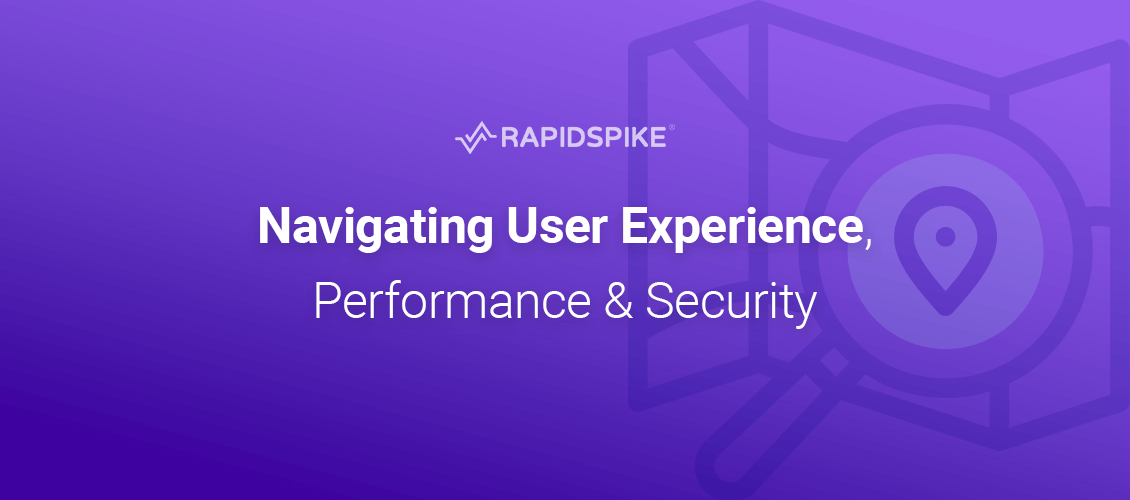In the ever-evolving digital landscape, where users expect lightning-fast, seamless experiences, a thoughtful balance needs to occur between creating a unique website experience and achieving optimal performance whilst tackling the mounting threats posed by cybercriminals.
This predicament places website owners and developers at a crossroads: How can they achieve great user experience (UX) while upholding stringent security protocols with a well-performing website?
We recently featured in Cyber Security Intelligence. If you missed the write up, you can catch up in full, here…
According to PwC’s future of CX report, one in three customers will leave a brand they love after just one bad experience, while 92% would completely abandon a company after two or three negative interactions. For customer-focused companies, performance is not just a luxury; it’s a make-or-break factor. Whether it’s purchasing a pair of shoes or seeking assistance through an online portal, for example, users expect their online journeys to be fast, reliable, and secure. There’s no room for compromise.
Unveiling Potential Trade-offs
The relationship between UX, performance and security is intricate, necessitating careful negotiation to achieve all objectives. While crucial security measures are undeniably essential, with some companies using third-party security tools to load their websites, they can inadvertently lead to blocking and verifying. This could potentially cause a downturn in user engagement. Conversely, an overzealous pursuit of user experience optimisations might unwittingly open doors to vulnerabilities, putting data integrity and user privacy at risk.
But when talking about performance and security, the key thing that organisations need to be aware of is third-party plug-ins. Whilst these undoubtedly enhance website functionality, they come with their own set of challenges that need effective management. These plugins, developed by third-party vendors, can serve various purposes, such as social media sharing buttons, contact forms, e-commerce functionality, or analytics integration. While they offer benefits, it’s imperative to carefully evaluate their security, performance, compatibility and reliability.
The risk is real. One of the most potent hacking groups, Magecart, targets not just website owners but their third-party providers to exploit weaknesses in the supply chain. A single breach in a third-party plugin can cascade to affect numerous businesses, as seen in the Adverline case, where compromised retargeting scripts led to data theft from 277 organisations.
Another real-world example is from 2018 when a major e-commerce website experienced a significant performance failure due to a third-party plugin. The website had integrated a third-party plugin to manage its shopping cart and checkout process. However, an update to the plugin led to slower page load times, which in turn increased bounce rates and decreased revenue. The issue was resolved after rolling back to a previous plugin version, highlighting the need for careful evaluation and testing of third-party plugins before implementation.
Every third-party plugin has a weight, latency, and footprint on website performance. Some are beneficial, while others can significantly hamper performance with minimal return on investment (ROI).
While most third-party providers have good security records, the need to comprehensively assess the potential risks they pose to overall security and reputation cannot be overstated. Establishing open lines of communication with these providers, engaging in discussions about their security and privacy policies, and putting response protocols in place for breach scenarios are integral steps to mitigating risks.
Fine Balancing Act
But amidst this complexity, one strategy emerges as not only pragmatic but essential: the integration of robust website monitoring software. These tools offer a dual advantage by providing in-depth insights into performance and UX whilst simultaneously enhancing security.
By benefiting from performance monitoring features, website owners gain an understanding of their website’s speed, loading, interactivity and visual stability metrics, to name a few, and can track improvements over time. This aids in maintaining optimal UX and ensuring that performance remains at the forefront of the digital journey.
Website monitoring tools also prove invaluable in ensuring compliance with industry standards, such as the latest iteration of the Payment Card Industry Data Security Standard (PCI DSS), version 4. In response to the rising menace of attacks like “web skimming,” website owners are increasingly reliant on Content Security Policies (CSPs) to manage the authorisation of scripts and content from cross-site sources. These tools provide a comprehensive snapshot of CSP errors and detected issues, offering website owners an opportunity to rectify vulnerabilities swiftly and bolster their security posture.
However, the utility of website monitoring tools extends beyond performance metrics and compliance. These powerful tools are also proficient at detecting potential data breaches, particularly those stemming from vulnerabilities in third-party plugins or domain hijacking attempts. The software’s ability to proactively identify security breaches not only reinforces the digital fortifications but also offers invaluable insights that can catalyse performance enhancements. Armed with data-driven intelligence, businesses can refine their performance strategies, thereby elevating website speed and providing users with an unparalleled digital experience.
The integration of website monitoring tools signifies a strategic approach that bridges the gap between security, performance and UX. By amalgamating performance insights with a proactive security stance, businesses can not only sidestep potential pitfalls but also sculpt a digital landscape characterised by both speed and security.
Every minute of uptime, every percentage of performance improvement, and every thwarted cyber attack contribute to gaining an edge over competitors. Achieving continuous improvement in website performance, reliability, and security isn’t just a necessity; it’s vital.
The delicate balance between these factors requires a comprehensive strategy that involves monitoring, evaluation, and adaptation.
RapidSpike are your online mystery shopper, monitoring your website for performance, reliability and security risks and issues. Find out more by signing up for a 30-day free trial today!






